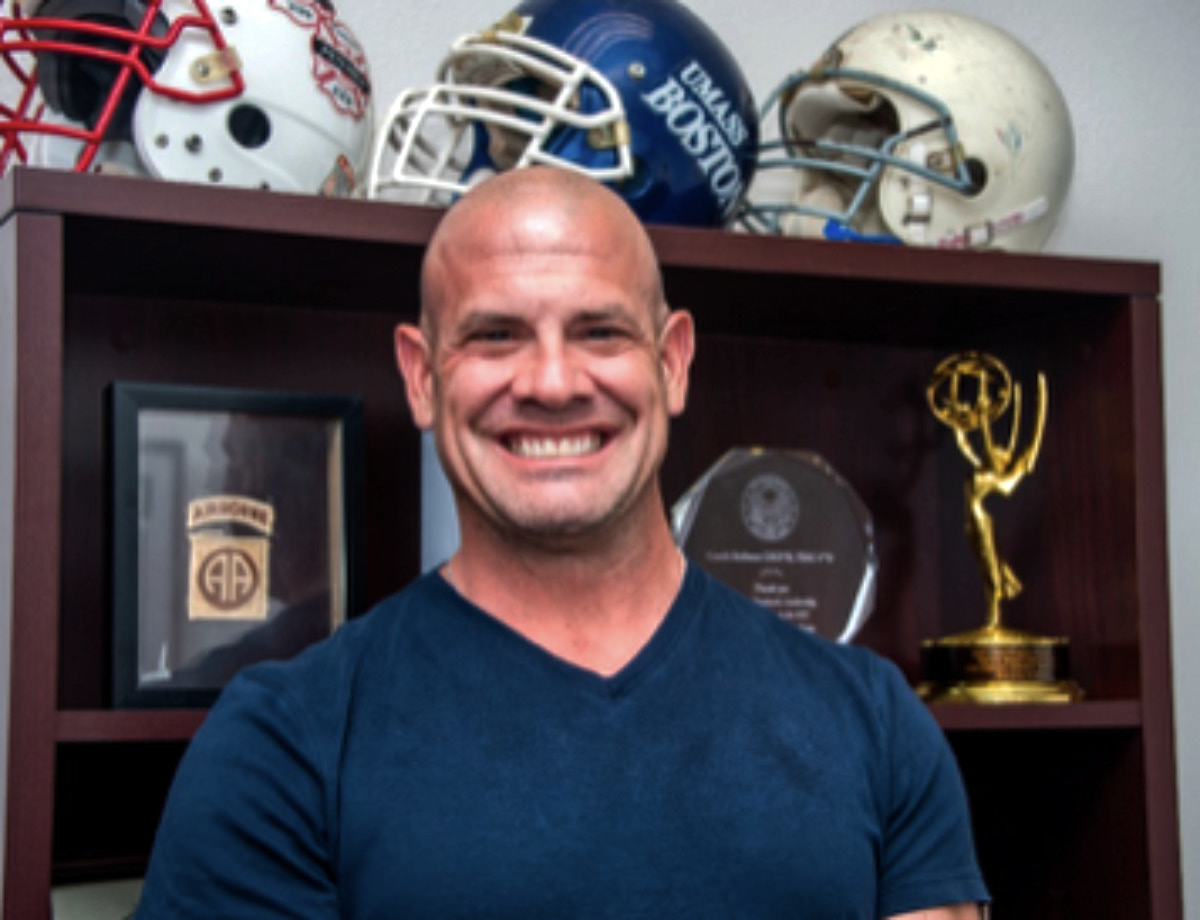Military service members are expected to be fit — it’s all a part of making sure a fighting force is ready for duty — and the U.S. Space Force is no exception.

Guardians may spend more time tracking satellites and space debris and staying alert for hostile missiles than engaging in hand-to-hand combat, but that doesn’t mean they can slack off when it comes to physical training. However, as the newest military service, the USSF is taking a more holistic health approach to fitness standards.
“Regular exercise isn’t just about building physical strength; it’s about optimizing our potential,” said Chief Master Sergeant Jacqueline Sauvé, Senior Enlisted Leader at Space Systems Command. “Research consistently affirms that exercise isn’t merely a routine; it’s a vital component fostering resilience, mental clarity, and holistic health. From safeguarding against cardiovascular risks to bolstering mental well-being, fitness is a mission imperative.”
When the Space Force was first established in December of 2019, without its own formal health and fitness program, it relied mostly on the Air Force’s standard Physical Fitness Assessment (PFA) test, which includes crunches/a plank, hand-release push-ups and a 1.5-mile run/shuttle run to gauge the fitness levels of Guardians.
Early in 2020, the USSF began development of a service-specific human performance capability for Guardians —the Holistic Health Approach (HHA), that consists of continuous fitness, performance health optimization, and capacity-building. HHA is intended to increase short- and long-term health outcomes for the force by meeting Guardians “where they are” and showing them what “right” looks like.
It’s a more comprehensive and malleable approach to overall health and wellness, to include physical fitness and public health and prevention. For decades, the U.S. Department of Defense has pushed out one-size-fits- all programs that do not take into account differences in individuals, said, Christine Heit, the Holistic Health Approach lead for the Space Force within USSF Headquarters.
Continuous Fitness is USSF’s developing approach to quantify and qualify important fitness metrics that are unequivocal markers of health, in an enduring, persistent, year-round manner. These metrics are cardiorespiratory fitness (CRF), purposeful physical activity, and body composition.
Wearable fitness technology — such as fitness trackers — helps to make this possible and is now at a point that can allow it to be employed for just such a purpose, said Carl Sheppard, the Holistic Health and Senior Human Performance Advisor for USSF Headquarters.
“By being able to appraise fitness in an ongoing, continual manner, the goal is to leverage physical fitness requirements to actually improve, optimize, and maintain health; as opposed to wielding it as a hammer or being constrained by arbitrary test standards,” said Sheppard.
“Performance Health Optimization includes the USSF Body Composition Program and Lifestyle Medicine principles,” Heit added. “That allows us to not only have metrics rooted in science for health but also to teach our Guardians ways to make lifestyle changes to increase overall health. Our priority is for Guardians to be healthy - and we make concerted efforts to build skills with Guardians to help them be successful.”
To assess body composition, the USSF is using waist-to-height ratio (WHtR). More well-known and often-used measures of body composition include BMI and body fat percentage models such as tape testing and skin-fold testing, Sheppard said. While useful in certain public health and athletic settings, these approaches fail to identify the most important aspect of body composition as it relates to health and injury: where is the fat?
“What we know from scientific literature is that excess abdominal fat - especially when it is stored deeper in the abdomen, next to our organs – is a much more significant indicator for the risk of acquiring obesity related, preventable disease – and injury – than body fat percentage alone,” Sheppard said. “This accumulation of abdominal fat is referred to as ‘central adiposity’ and WHtR is a very sensitive test to identify it.”
The public health message is very simple: “Keep your waist circumference to less than half your height,” said John Hofman, MS, RCSCS (with distinction) TSAC-F (with distinction), certified strength and conditioning specialist at Los Angeles Air Force Base. “Air Force physical assessments are once or twice annually depending on a person’s score. People were observed cramming for an assessment, working only in the weeks leading up to the test. The Space Force wanted to develop a science-based mechanism for fitness and health outcomes that promoted consistent physical activity rather than episodic preparation.”
He continued, “As a result, the Space Force partnered with the Air Force Research Laboratory (AFRL) to conduct a two-year study using portable wearable fitness devices, which started in June of 2023. Guardians can voluntarily opt-in to the study and be exempt from the Air Force physical fitness assessment as long as study criteria are met: 600 exercise minutes a month, monthly cardiorespiratory fitness readings, and engagement with the AFRL study team. There are also plans to connect increased physical fitness to improved cognitive performance and mission readiness.”
In addition, USSF also is implementing Guardian Resilience Teams at every USSF base, with a virtual team to help geographically separated units and remote Guardians. These teams will include a holistic health integrator, certified strength and conditioning specialist, licensed mental health provider and physical therapist.
The purpose of the Guardian Resilience Teams is to make sure US SF service members have the kind of support they need not just to be physically fit, but also mentally and emotionally ready to perform at the highest level, Hofman said.
“I like to tell people, ‘We’re just trying to manage stress - enormous stress, but stress,” Hofman said. “How do you do that? Well, there’s no real magic pill — it’s eating right, it’s sleep, it’s exercise.”

John Hofman, certified strength and conditioning specialist,
at the Fitness Center at the Los Angeles Air Force Base.
Photo by Van D. Ha
It’s safe to say Hofman understands the toll stress can take – he spent more than 15 years as a tactical strength and conditioning specialist for both law enforcement and fire/rescue, and is an expert in tactical strength and conditioning. He has won numerous awards — including an Emmy Award for Branded Content in 2021 for “Did You Know: ‘Silent No More” an officer suicide-prevention video, as a member of the California Peace Officer Standards and Training team. He also played college football and competed for 12 years on the U.S. canoe and kayak team, where he competed in two Olympic trials.
“Space Force wants to make sure our Guardians are getting positive reinforcement and positive feedback to make healthy choices for themselves,” Hofman said. “’Fit for duty’ is always the most common question – what does that mean? Does it mean that because you can run a mile and a half in under 12 minutes and do lots of pushups that you’re fit for duty? I don’t think so.”
To Hofman, ‘fit for duty’ isn’t just one physical component, but a comprehensive set that takes the whole person into account. Biofeedback from portable wearable fitness devices and bloodwork can be helpful in tailoring workouts to exactly what an individual needs – but Guardians may need some help in interpreting the data, Hofman said.
“For example, if someone is always stressed out, long, slow running is a good way to reduce the cortisol (stress hormone),” Hofman said. “Maybe someone likes to do a lot of bootcamps and high-intensity training. This will spike the cortisol, so we can educate them on proper recovery tactics to help bring it down so they can sleep better.”
People are more likely to stick to a workout routine if they actually enjoy it, so Hofman said he oftens begins consultations by asking the Guardian what they like to do and going from there.
“Do you eat well? I don’t mean ‘eat perfect.’” Hofman added. “We don’t need to add more stress to eating. Eating shouldn’t be that complicated. We don’t look at diets – we look at habits.”

The Guardian Resilience Team also has a licensed mental health professional to help Guardians with their mental health, and a physical therapist to help them deal with pain – someone with chronic pain is not going to function at their peak mental and physical ability, Hofman said. Chronic sleep problems also take a physical toll on the body and mind and can interfere with a Guardian’s efforts to eat well and exercise.
“By using a more well-rounded, holistic approach, you’re creating a feedback loop,” Hofman said. “You provide the resources to educate and help to explain what this information is, to keep that loop going. You’re providing resources so they can take accountability for their wellbeing and you’re there to support them - versus ‘Here’s a check box, you’re done. We want Guardians to be aware of what they’re doing – and make those corrections and make healthy choices for themselves. We peel back the onion, and now we have a well-rounded individual who’s fit for duty.”
“Our Guardians need to be mentally and physically ready to meet the unique demands of Space,” said Tim Stearns, DrPH, MPH, Los Angeles Air Force Base Guardian Resiliency Team Lead. “When our Guardians are empowered, educated, and given the skills to be successful, they then become the most lethal version of themselves, and that’s exactly what the HHA does!”
“The innovative, data-driven, and evidence-based approach leads to the development and implementation of comprehensive and individualized fitness programs that optimize performance and reduce injuries,” Stearns continued. “Coach Hofman assesses each member, develops a personalized program rooted in science, and educates every member he works with. Guardians are encouraged to participate in fitness activities they enjoy with proper body mechanics, technique, and form resulting in stronger Guardians. A physically stronger Guardian is a more resilient Guardian; and a resilient Guardian is a Guardian ready to dominate the Space Domain and in life. Coach Hofman improves the quality of lives of Guardians by creating a positive relationship with physical fitness that will endure throughout their military career and beyond.”


